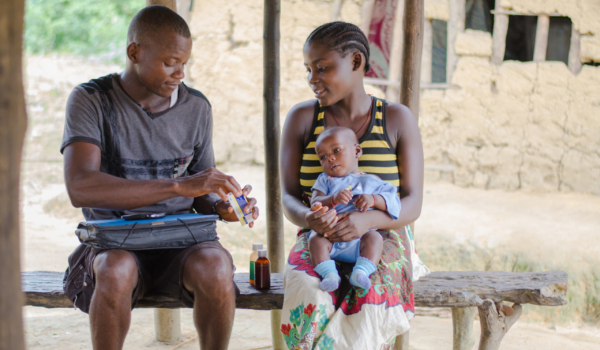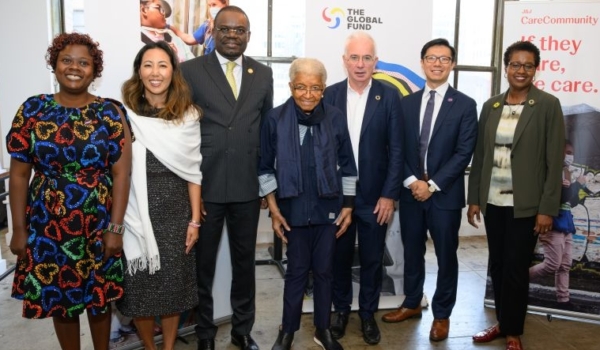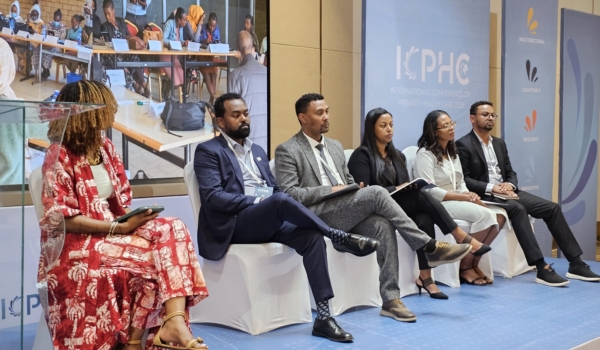This piece originally appeared on the Pandemic Action Network website.
Introduction
Despite a hyper-connected global marketplace, the COVID-19 pandemic is straining every part of the global supply chain. Nowhere has this been more evident than in the massive, persistent shortages and delays in getting personal protective equipment (PPE) to frontline health workers. Essential PPE, defined as surgical masks, gloves, face shields, gowns, and N95 masks, are critical tools for an effective pandemic response. Relative to therapeutics, diagnostics, and vaccines, essential PPE is easy to manufacture, does not face the same regulatory hurdles, and has flexible storage considerations. Moreover, essential PPE is disease-agnostic, so should and must be easily available and equitably distributed for any outbreak.
Yet early in the COVID-19 pandemic, global demand for PPE grew by a factor of 100 and prices climbed 20 times higher. An international survey conducted in April 2020 found that only 42.6% of clinicians had access to adequate PPE. In late July, the Africa Centres for Disease Control and Prevention (Africa CDC) warned of acute shortages of PPE across the continent. Innovative partnerships and solutions helped fill some of these gaps. But now nearly a year into the pandemic, and in the face of surging COVID-19 cases around the world, routine access to the most basic commodities for a pandemic response remains a challenge.
While the global shortage of PPE is affecting all health workers, those in low- and- middle income countries (LMICs) remain most at risk. The lack of adequate PPE is a major factor in disruptions to essential health services such as assisted childbirths, pre- and post-natal care, and childhood immunizations, and in keeping families from seeking care due to fear of infection. Equally disturbing are anecdotes and evidence that health workers have continued to provide care while unprotected and are at risk to become vectors (e.g., in India, Namibia and WHO Pulse survey from August 2020 on health service disruptions). Thousands of health care workers globally have already died from COVID-19.
As COVID-19 cases continue to spread, and as countries prepare for mass delivery of COVID19 vaccines, world leaders must act now to equip frontline health workers with essential PPE and also begin to address the systemic challenges to improve preparedness for future infectious disease outbreaks and pandemic threats.
The Pandemic Action Network recommends the following three areas for action to resolve the urgent global PPE access crisis and build a more reliable and sustainable pandemic supply chain for the future:
- Establish clear points of accountability at the regional and country-level to ensure sufficient supplies of PPE for frontline health workers.
- Support LMICs to scale up domestic and/or regional production of essential PPE to ensure reliable and secure access.
- Ensure every country has an interagency technical working group, including UN, NGO, and private sector partners, on essential PPE to ensure routine and stockpile availability for emergencies.
Overview of key challenges to PPE access in LMICs
Limited visibility into PPE needs.
There is no single UN agency or regional body responsible for quantifying PPE needs. Different countries use different approaches to determine their needs, and they are not aligned with funder or UN efforts. Countries receiving donations aren’t always aware or prepared, leaving PPE sitting in customs clearance and/or warehouses for long periods. More demand for PPE means consideration for both supply (quantification, planning, storage, transport, and waste management) as well as service delivery (training, supervision, and information systems that ought to be aligned with provision of routine services).
The PPE market is fragmented.
On the supply side, most PPE manufacturers are located in Asia and require up-front cash payments and high volumes to secure low prices. Buyers in LMICs have had a difficult time meeting these conditions. Hundreds of manufacturers in Africa are seeking to repurpose their capacity but require support navigating an uncertain market landscape and building requisite technical expertise, particularly to ship products outside their borders. On the demand side, buyers in LMICs are fragmented and forced to compete with better resourced global players and countries – leading to inequitable distribution of PPE. Freight and transport options are few because the options that do exist disproportionately serve markets with greater purchasing power.
Limited standards and support for market access and distribution in emergency settings.
While international standards are clear, LMICs are at greater risk of procuring sub-par supplies. Further, while it’s recommended that goods are procured from a mix of local and international suppliers, there is little to no support for domestic manufacturers to go through the registration process and prepare for certification. Current PPE regulatory frameworks, body of norms, and international standards are insufficient in times of crisis – challenges that are well documented in a recent review. Limited visibility on acceptable quality standards also inhibits domestic suppliers from exporting.
Existing last mile distribution challenges hamper equitable PPE access.
Last mile distribution in-country poses unique challenges given the size of the volumes of these products: they are 5-10 times greater than traditional medical commodities such as vaccines, injectables, and oral medications. The in-country challenges of PPE access are most acute within the scope of the primary health care system, which is where most routine, essential health services are provided, including cost-effective interventions such as: childhood vaccinations; prevention and treatment for AIDS, malaria, tuberculosis, diarrhea, pneumonia, and other deadly infectious diseases; and family planning, maternal, newborn, and other child and adolescent health and nutrition services. Substantial evidence exists that prior to COVID19, last mile distribution was already the weakest link in the global health supply chain. Thus, ensuring PPE reaches frontline health workers is that much more challenging, and yet necessary, both to limit community spread of COVID-19 and to help prevent undoing decades of progress.
An agenda for international action
1. Establish clear points of accountability at the regional and country-level to ensure sufficient supplies of PPE for frontline health workers.
- Develop a strategy to align PPE needs and support for their respective geographies. Although global bodies were quick to provide guidance, many countries lacked visibility on demand and were limited in their ability to procure and distribute quality PPE quickly. For example, frontline health workers such as community health workers, were left out of initial quantifications. A country-based strategy would take into account full demand across health and non-health sectors, design transparent decision making frameworks to inform purchasing and distribution, and align with regional and national Emergency Operations Centers (EOCs).
- Create and drive widespread usage of a shared, real-time data system to track and manage PPE supply and demand across geographies and environments. This will help local and national governments, regional bodies, international partners, and funders to gain a more comprehensive and timely understanding of the local supply and demand for PPE, which can then be aggregated for pooled procurement. This will help improve the ability of health ministries and their international partners to prioritize and coordinate supply movements for the COVID-19 response, and it will also improve their ability to predict pandemic patterns and anticipate future supply needs.
- Promote greater transparency and accountability for procurement and delivery. Countries and their international partners should commit to using a publicly accessible platform to manage procurement allotments, such as the Africa Medical Supplies Platform).
- Establish regional stockpiles in strategic locations. Stronger mechanisms must be in place to quantify and stockpile for emergencies so that PPE is efficiently accessible to smaller organizations and countries. A contingency plan that allows for the movement of critical supplies even in the case of flight and other potential supply chain interruptions should also be considered.
- Conduct post-event reviews and regular assessments of supply chain resiliency. Explicitly identify the systemic weaknesses exposed by COVID-19 and document innovations at regional and country levels so they can be integrated into health systems strengthening efforts. Periodic assessments and “stress tests” of the supply chain should also be prioritized in national action plans for health security (NAPHS).
2. Support LMICs to scale up domestic and/or regional production of essential PPE to ensure reliable and secure access.
- Design norms and standards for acceptable levels of PPE quality based on expected services. This will enable countries to implement standardized requirements for acceptable levels of PPE quality, assess and invest in testing capacity for quality, and invest in tactics to enforce standards. These standards must take into account domestic supplier feasibility to produce locally.
- Develop regional strategies to ensure an enabling environment for local suppliers. Countries and/or regions need to put in place political and economic policies that incentivize local manufacturing capacity: for example, regulatory frameworks that are accepted by a pool of countries and provide clarity on standards, tax incentives, and/or access to capital whether financial or other assets.
- Develop strategies for private sector engagement that would provide surge capacity of transportation and reduce the risk of disruption of existing routine deliveries. This could be accomplished through multilateral fora, such as the UN Global Compact, or through targeted public-private partnerships in-country (e.g. such as the Roadmap for Improving PPE Production in Egypt).
- Establish and fund a facility to help local private sector businesses in LMICs access the financial, management, and technical support they need to scale up domestic and/or regional production and delivery of essential PPE. This facility would support companies and countries to develop business cases, aggregate demand, upgrade equipment, secure access to capital, and share best practices on conversion of existing manufacturing for PPE. It would also help facilitate the registration and certification process, and advise on effective public-private partnerships for surge transport capacity to reduce the risk of routine service disruptions. The International Finance Corporation’s new $4 billion Global Health Platform, the proposed Global Health Security Challenge Fund and the regional multilateral development banks are some potential sources of financing that could be tapped to support this effort.
3. Ensure every country has an interagency technical working group, including UN, NGO, and private sector partners, on essential PPE to ensure routine and stockpile availability for emergencies. Responsibilities of these working groups should include:
- Define standards, scope needs, and quantify and aggregate in-country public demand across health and other sectors. The working group would work with private and public sector stakeholders to assess need, streamline distribution, and ensure a reliable mix of both locally and internationally-procured products. Predictability and transparency in public procurement would increase competition and attract investors for local manufacturing. o Include community health resources in supply chain planning. Establish specific planning and monitoring mechanisms that account for PPE needs of frontline health workers at the community level, and assure equitable distribution and use of products.
- Ensure PPE supply chains are aligned with national preparedness and response plans for emergencies, as part of EOC responsibilities. These national plans should also link with regional contingency plans and scenarios depending on the outbreak circumstances. In this context, the working group would also be responsible for identifying PPE needs that can be replenished based on lead times and expected utilization rates in an emergency outbreak situation.
Conclusion
COVID-19 has laid bare the devastating impact an insufficient PPE supply chain can have on communities and health workers. To effectively address the pandemic, world leaders must urgently prioritize funding and deployment of sufficient PPE supplies to ensure the health and safety of frontline health workers, especially those who serve the most vulnerable and hardest-to-reach populations. At the same time, global, regional, and national leaders should invest in strengthening the coordination, planning, and accountability systems required to build market and supply chain resilience and better prepare for future pandemics.
The Pandemic Action Network would like to thank the representatives of the organizations participating in its Global Health Security Architecture Working Group and others whose ideas and perspectives have been reflected in this paper, including but not limited to: Africa Centres for Disease Control and Prevention, African Union Development Agency/NEPAD, Center for Global Development, Community Health Acceleration Partnership, Last Mile Health, Tony Blair Institute, and VillageReach.
This paper is one of a six-part Pandemic Action Agenda series urging world leaders to take action to strengthen pandemic preparedness.




